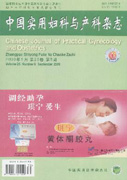In China,recurrent spontaneous abortion(RSA)refers to spontaneous abortion continuously at least 3 times with the same partner. More than 80% spontaneous abortion happens during the early pregnancy. For the RSA patients,it is necessary to observe the embryo growth during the early pregnancy,so that we can adjust the treatment in time,increasing the gestation,decreasing the economic and mental burden. This paper mainly sketches some quotas about the early fetal loss.

